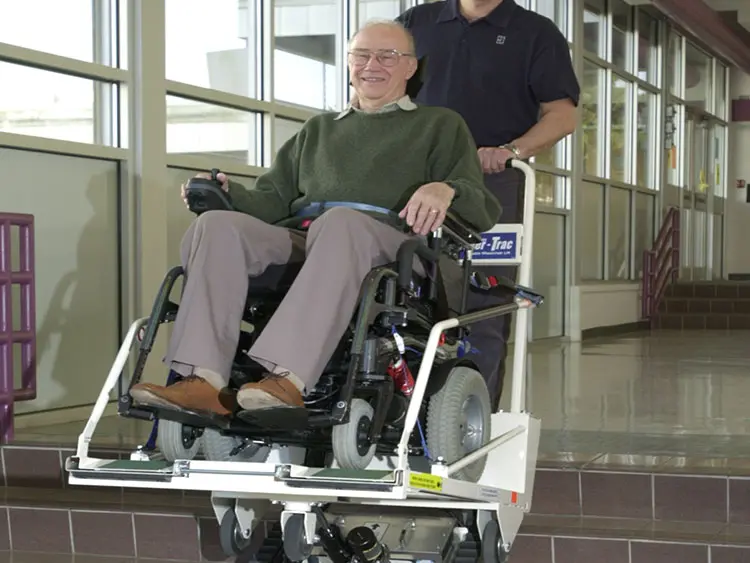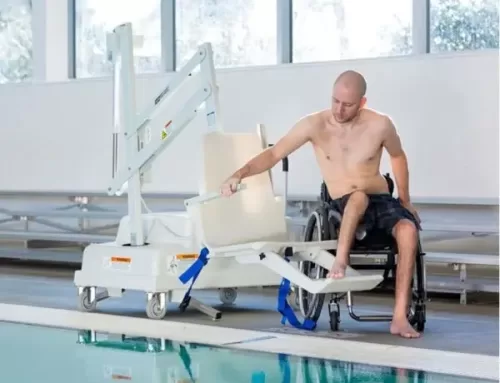Loss of mobility in the legs can significantly impact one’s independence and quality of life. If you’ve ever wondered what can cause loss of mobility in the legs, you’ve come to the right place. Individuals experiencing these symptoms may seek prompt medical attention if necessary.
One common cause for this is muscle weakness. This weakness can be caused by underlying conditions such as spinal cord injuries or degenerative nerve diseases like neuropathy. Other potential causes include sciatica, arthritis, peripheral neuropathy, etc. Due to these conditions, you may experience numbness or weakness in one or both legs.
Our article today offers valuable insight into what causes leg immobility. Knowledge of these possible causes will assist readers in discussing their concerns with healthcare professionals specializing in leg weakness disorders.
What are Weak Leg Symptoms?
Weak leg symptoms can go beyond feeling the legs giving out while walking. Along with sudden muscle weakness, individuals may also experience other accompanying symptoms.
These include
- muscle pain in the legs
- reduced strength and stiffness in leg muscles
- spasms
- cramps
- lower back pain
- heavy feeling in the legs or numbness
It is common to feel tingling or have difficulty lifting the leg or foot. In some cases, there can be paralysis on one side. Such a situation can lead to problems standing and maintaining balance, making walking unstable for affected people.
It’s worth noting that these weaknesses could occur suddenly and individually (in only one limb). However, they could also become chronic problems throughout someone’s life.

What Can Cause Loss of Mobility in Legs? – 10 Causes
There are multiple causes of leg weakness, ranging from over-exertion to severe medical necessities like a stroke or disease. If the leg deficiency is due to a stroke, other symptoms are
- facial drooping
- lack of mental awareness
- slurred speech
A transient ischemic attack (TIA) is named a mini-stroke and could be a notification of a stroke. The TIA happens fast as a blood clot in the brain intercepts blood flow and then rapidly dissolves.
It can cause paralysis on one side, slurred speech, numbness, weakness, and paralysis. One must seek immediate medical assistance because early treatment increases the chances of recovery.
Most cases of leg weakness occur due to something different than strokes or TIAs. However, still seeing a doctor for it would be best either way. Some common causes of loss of mobility in legs are-
-
Sciatica
Sciatica happens when the sciatic nerve, which extends from the lower spine down each leg, becomes compressed. This compression can result in pain and deficiency in the legs.
It could be a sign of sciatica if you experience symptoms like weakness, numbness, and back or leg pain. Immediate medical awareness is advised to determine an accurate diagnosis and treatment plan for this condition that affects mobility in your legs.
-
Medications
Medications can sometimes cause muscle flaws, leading to loss of leg power. Corticosteroids and statins are known for these side effects.
-
Spine Conditions
Loss of strength in the legs can be caused by various medical issues that develop in the spine. These include herniated discs, spinal stenosis, arthritis, and degenerative disc disease.
While leg weakness is a common symptom of these conditions, they are often accompanied by other symptoms. Nerve damage from these conditions may cause back pain. Moreover, it can cause
- radiating pain to other body areas
- numb legs or feet
- tingling sensations due to nerve issues
-
Peripheral Neuropathy
Peripheral neuropathy is a sickness that happens when the peripheral nervous system sustains damage to its nerves. This damage can be caused by infections, injuries, or diseases such as diabetes.
The symptoms of diabetic neuropathy include leg pain, weakness, and difficulty walking if the disease is symptomatic. Other signs include:
- shooting pain
- numbness in the feet and hands
- freezing or burning sensations
-
Neuromuscular Diseases
Muscle twitching and stiffness are sometimes associated with neuromuscular diseases such as muscular dystrophy, ALS, MS, and myasthenia gravis.
Neuromuscular diseases affect the nerves and muscles in our body, leading to difficulties with movement and coordination.
-
Toxins
Exposure to toxins, whether from environmental factors or cleaning and pest control products, can contribute to developing toxic neuropathy. This condition often presents as nerve pain in the legs and feet or even in the arms and hands.
-
Injuries
An injury from a fall or vehicle casualty can lead to losing leg power. For example, a ripped meniscus in the knee can restrict knee functioning. Pulled ligaments, damaged knee bones, or tangled cartilage can force your legs to give out due to knee trauma. These injuries may result in sudden weakness and limited mobility in the affected leg(s).
-
Arthritis
Arthritis, a condition that causes inflammation and joint pain, can significantly impact leg mobility. When arthritis affects the knee joint, it can lead to instability and weakness in the legs.
This loss of strength often results in difficulty walking or standing for long periods. In addition to pain and distress, individuals with arthritis may experience shooting pains down their legs and into their feet due to the unstable knee structure.
Age-related factors also play a role, as research shows that muscle deficiency is more common as people age.
-
Thyroid Conditions
Hyperthyroidism can lead to muscle weakness, while hypothyroidism can cause joint and muscle pain. These thyroid conditions affect mobility.
-
Infections
Infections can cause severe damage to the spinal cord, brain, or nerves, resulting in leg weakness. According to WHO, musculoskeletal disorders such as osteoarthritis and lower back pain can also lead to a lack of leg mobility. Certain infections like meningitis and polio can also cause muscle weakness and impair leg movement.

Prevention and Management Plan
Exercise and a healthy lifestyle are paramount to reducing the risk of leg mobility issues. Regular physical movements like walking or swimming can help strengthen leg muscles and improve overall balance. Maintaining a nutritional diet rich in vitamins and minerals also supports optimal muscle health.
Regular check-ups with healthcare professionals are crucial for early intervention if any potential signs of leg weakness arise. Seeking medical attention promptly allows for prompt diagnosis and cure, which can prevent further complications.
Call Before You Fall’s product effectively reduces mobility issues by providing individuals with tools. These tools promote safety while enhancing independence. We have a range of assistive devices designed specifically for seniors. We aim to improve quality of life by mitigating the risks associated with loss of mobility in the legs.
You will have to take proactive steps towards prevention combined with timely interventions. These steps can significantly minimize the impact on daily activities caused by age-related changes or underlying conditions affecting leg strength.
Conclusion
In conclusion, various factors can cause loss of mobility in the legs. Conditions such as spinal cord injuries, neuropathy, and stenosis can lead to weakness or numbness in the legs.
It is important to note that experiencing sudden leg weakness could indicate a serious underlying health condition and should not be ignored. However, there is hope for those facing mobility issues in their legs. That’s because proper diagnosis and treatment options are available depending on the specific cause.
Call Before You Fall is here to provide the tools and resources needed for a safer and more independent life when dealing with these challenges. By contacting us, get the tools you require to live a secure and more liberated life today.




